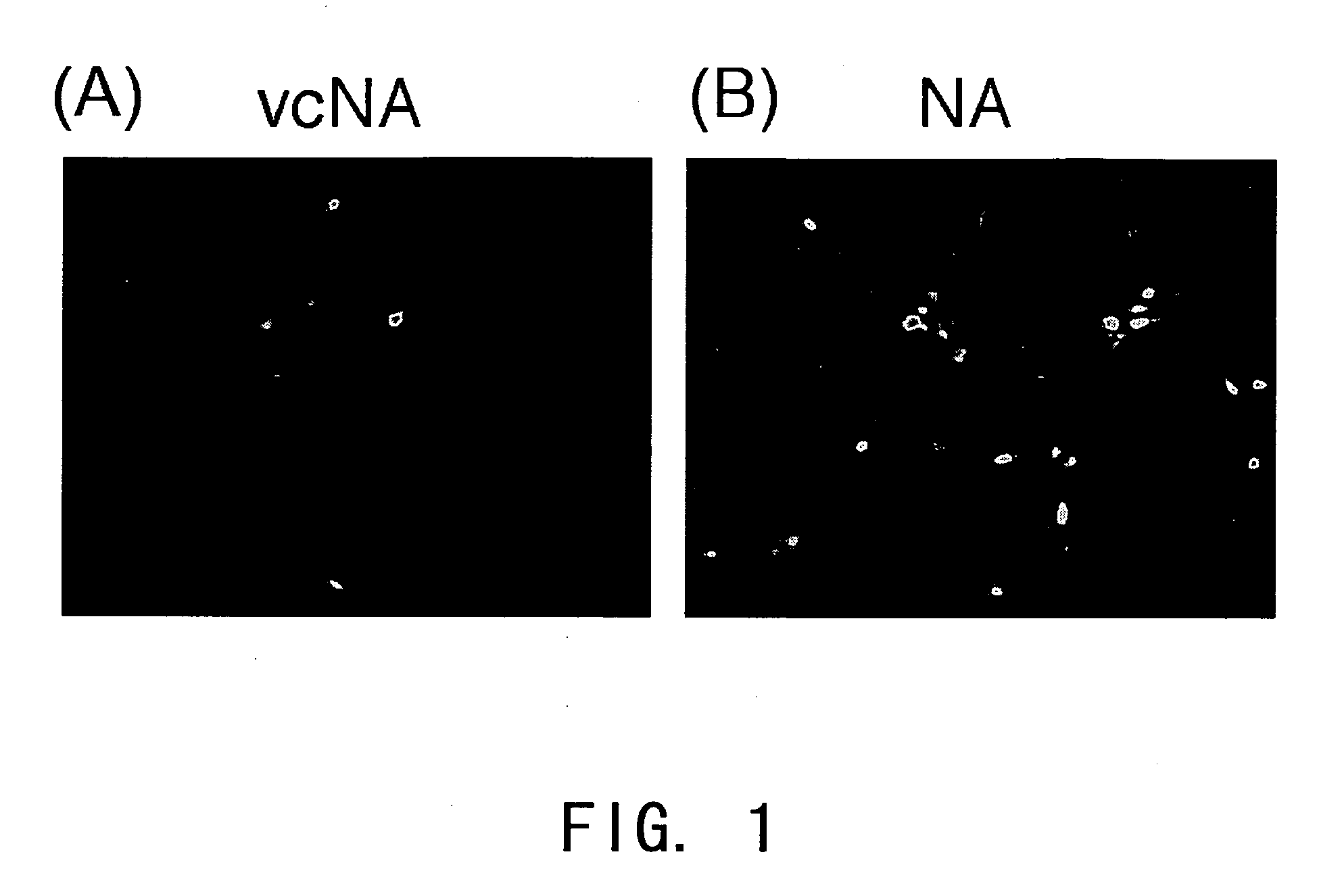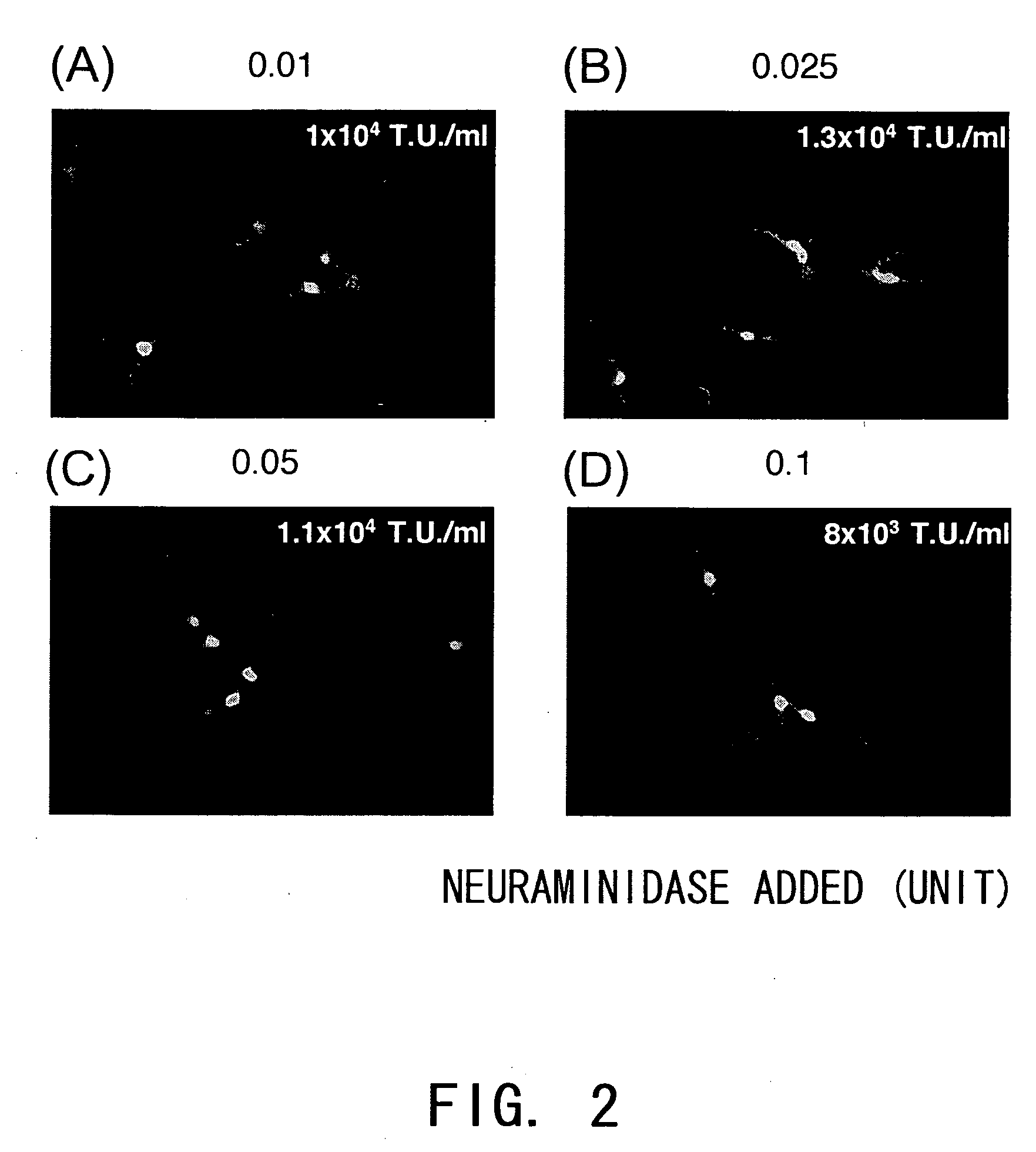Process for producing virus vector containing membrane protein having sialic acid-binding in envelope with the use of gram-positive bacterium origin nueraminidase
a technology of gram-positive bacteria and envelope protein, which is applied in the field of process for producing virus vector containing membrane protein having sialic acid-binding in envelope with the use of gram-positive bacteria origin nueraminidase, can solve the problems of unsatisfactory titer of ha pseudotyped viruses produced using purified na, and achieves a wide range of infectivity, high degree of efficiency, and reduced risk of pathogenicity for such particles
- Summary
- Abstract
- Description
- Claims
- Application Information
AI Technical Summary
Benefits of technology
Problems solved by technology
Method used
Image
Examples
example 1
Preparation of Pseudotyped SIV Vector with Influenza Viral Envelope Using NA Derived from Gram-positive Bacterium
Cell Culture
[0120] 293T cells (human embryonic kidney derived cell line) (Proc. Natl. Acad. Sci. U.S.A. 90: 8392-8396 (1993)) were cultured in DMEM with high glucose (Gibco BRL) supplemented with 10% inactivated bovine calf serum (BIO WHITTAKER) at 37° C., 10% CO2.
Vector Construction
[0121] 293T cells were seeded in a 6-well plastic culture plate at 5×105 cells / well, and cultured for 48 hours at 37° C., 10% CO2. The culture medium was replaced with 800 μl of DMEM containing 1% bovine serum albumin in each well, and the cells were subjected to transfection. For each well, 1200 ng of the gene transfer vector pGL3C / CMVL.U3G2 / RREc / s / CMVFEGFP / 3LTRΔU3, 360 ng of the packaging vector pCAGGS / SIVagm gag-tat / rev, and 240 ng of HA protein expression plasmid pCAGGS-HA were dissolved in 100 μl of Opti MEM (Gibco BRL), then 6 μl of PLUS Reagent (Gibco BRL) was added, mixed, and in...
example 2
Effect of Dosage of Added NA from V. cholerae on Production of an HA Pseudotyped SIV Vector
[0124] Production of an HA pseudotyped SIV vector was performed as described above with the addition of varying amounts of NA derived form V. cholerae, and the effect was examined. The result showed that viral titers obtained with NA added at 0.01 to 0.1 U (0.005 to 0.05 U / ml) were not significantly different. Thus, the result argues against the possibility that a low titer of vectors produced using NA from V. cholerae is due to the low amount of NA used (FIG. 2).
PUM
| Property | Measurement | Unit |
|---|---|---|
| Efficiency | aaaaa | aaaaa |
Abstract
Description
Claims
Application Information
 Login to View More
Login to View More - R&D
- Intellectual Property
- Life Sciences
- Materials
- Tech Scout
- Unparalleled Data Quality
- Higher Quality Content
- 60% Fewer Hallucinations
Browse by: Latest US Patents, China's latest patents, Technical Efficacy Thesaurus, Application Domain, Technology Topic, Popular Technical Reports.
© 2025 PatSnap. All rights reserved.Legal|Privacy policy|Modern Slavery Act Transparency Statement|Sitemap|About US| Contact US: help@patsnap.com


